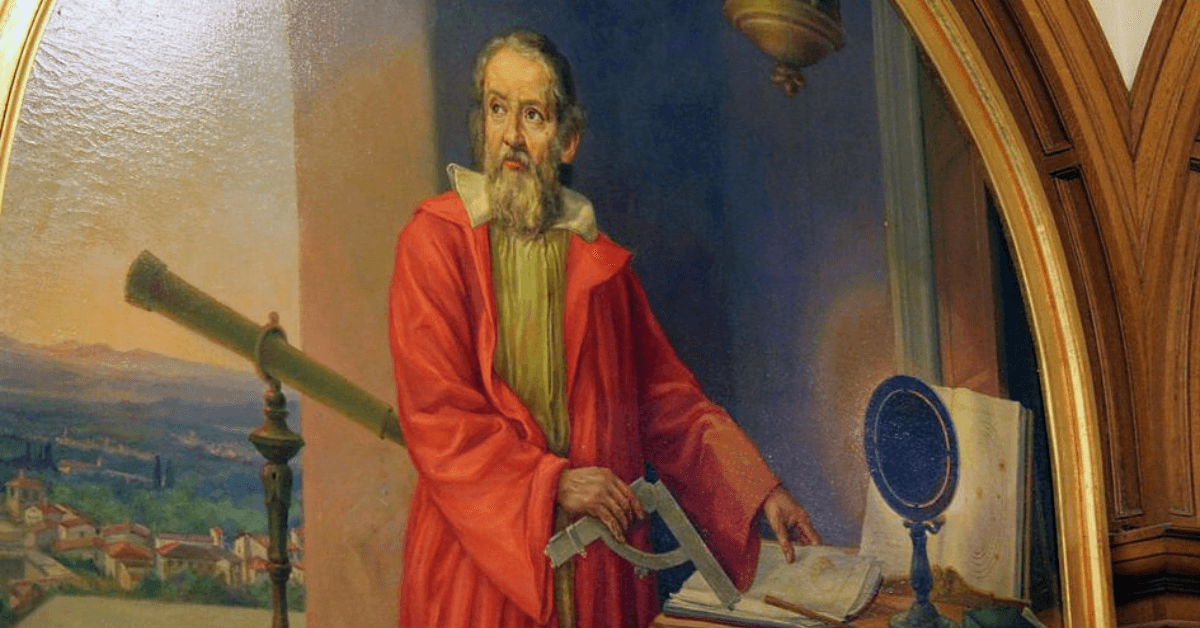In the vast tapestry of scientific history, few figures shine as brightly as Galileo Galilei. Renowned for his groundbreaking contributions to astronomy, physics, and mathematics, Galileo stands as a towering figure of the Renaissance era. Among his many achievements, perhaps none is as emblematic as his steadfast advocacy for the Copernican heliocentric theory. In this exploration, we delve into the life, works, and enduring legacy of this intrepid scientist, whose unwavering commitment to truth reshaped our understanding of the cosmos.
You May Also Like: Simone Biles: Revolutionizing Gymnastics
Early Life and Education:
Galileo Galilei was born on February 15, 1564, in Pisa, Italy, to Vincenzo Galilei, a renowned musician, and Giulia Ammannati. From an early age, Galileo displayed an insatiable curiosity and a keen intellect. His education began at the Camaldolese Monastery at Vallombrosa before he enrolled at the University of Pisa to study medicine. However, his interests soon gravitated towards mathematics and physics, fields in which he would later make indelible marks.
The Copernican Revolution:
The prevailing cosmological model in Galileo's time was the geocentric theory, which posited that the Earth lay at the center of the universe, with celestial bodies orbiting around it. This model, championed by the ancient Greek astronomer Ptolemy, held sway for centuries. However, a revolutionary alternative emerged in the form of the heliocentric theory proposed by Nicolaus Copernicus in the 16th century. According to this theory, the Sun, not the Earth, was the center of the solar system, with the planets, including Earth, revolving around it.
Galileo's Observations and Discoveries:
Galileo's relentless pursuit of knowledge led him to construct his own telescopes, which he used to make groundbreaking observations of the heavens. In 1609, he made a series of remarkable discoveries that would revolutionize astronomy. Among his most significant observations was the discovery of the four largest moons of Jupiter, now known as the Galilean moons. This observation provided compelling evidence for the heliocentric model, as it demonstrated that celestial bodies could orbit a body other than the Earth.
The Starry Messenger:
Galileo's observations culminated in the publication of his seminal work, Sidereus Nuncius (The Starry Messenger), in 1610. In this treatise, Galileo detailed his celestial observations, including his discovery of the moons of Jupiter and the phases of Venus. The publication of Sidereus Nuncius caused a sensation across Europe and cemented Galileo's reputation as a pioneering astronomer.
Conflict with the Church:
However, Galileo's embrace of the Copernican heliocentric theory put him on a collision course with the Catholic Church, which viewed the heliocentric model as heretical. In 1616, the Church issued a decree prohibiting the advocacy of heliocentrism as fact, prompting Galileo to tread carefully. However, his subsequent publication of Dialogue Concerning the Two Chief World Systems in 1632 reignited tensions with the Church.
Trial and Inquisition:
Galileo's defiance of Church doctrine led to his infamous trial before the Roman Inquisition in 1633. Charged with heresy, Galileo was forced to recant his support for the heliocentric theory under threat of torture. He spent the remaining years of his life under house arrest, although he continued his scientific inquiries until his death in 1642.
Legacy and Impact:
Despite his persecution, Galileo's legacy endured, inspiring future generations of scientists and thinkers. His advocacy for the Copernican theory paved the way for the eventual acceptance of heliocentrism and the overthrow of the geocentric model. Moreover, his methodological approach to science, characterized by empirical observation and mathematical analysis, laid the groundwork for modern scientific inquiry.
Galileo's Methodology and Scientific Revolution:
Central to Galileo's contributions was his revolutionary approach to scientific inquiry. Unlike his predecessors, who relied heavily on deductive reasoning and philosophical speculation, Galileo emphasized empirical observation and mathematical analysis. His use of telescopes to observe celestial phenomena paved the way for a new era of experimental science, where hypotheses were tested against empirical evidence. This methodology, known as the scientific method, remains the cornerstone of modern scientific inquiry.
Galileo's Influence on Modern Astronomy:
Galileo's observations and discoveries laid the foundation for modern astronomy, revolutionizing our understanding of the cosmos. His discovery of the moons of Jupiter provided compelling evidence for the heliocentric model and challenged the prevailing geocentric paradigm. Moreover, his observations of the phases of Venus provided further support for the heliocentric theory, as they could only be explained by Venus orbiting the Sun.
Galileo's Contributions to Physics:
In addition to his astronomical achievements, Galileo made significant contributions to the field of physics. His experiments with inclined planes and falling bodies laid the groundwork for the modern science of mechanics. By quantifying the laws governing motion, Galileo laid the foundation for Isaac Newton's later work on classical mechanics. His emphasis on empirical observation and mathematical analysis revolutionized the study of the natural world, ushering in a new era of scientific inquiry.
Galileo's Enduring Legacy:
Galileo's legacy extends far beyond the realm of science, influencing fields as diverse as philosophy, theology, and literature. His defense of the heliocentric theory against the dogma of the Catholic Church inspired subsequent generations of scientists to challenge orthodoxy and pursue truth fearlessly. Moreover, his advocacy for the separation of science and religion laid the groundwork for the secularization of knowledge and the emergence of modern science.
Conclusion:
In conclusion, Galileo Galilei stands as a towering figure of the Renaissance era, whose contributions to astronomy, physics, and mathematics reshaped our understanding of the cosmos. His fearless advocacy for the Copernican heliocentric theory challenged entrenched dogma and laid the foundation for the scientific revolution. As we reflect on his life and legacy, let us remember the indomitable spirit of Galileo Galilei, who dared to defy convention and unlock the mysteries of the universe.







.png)


0 Comments